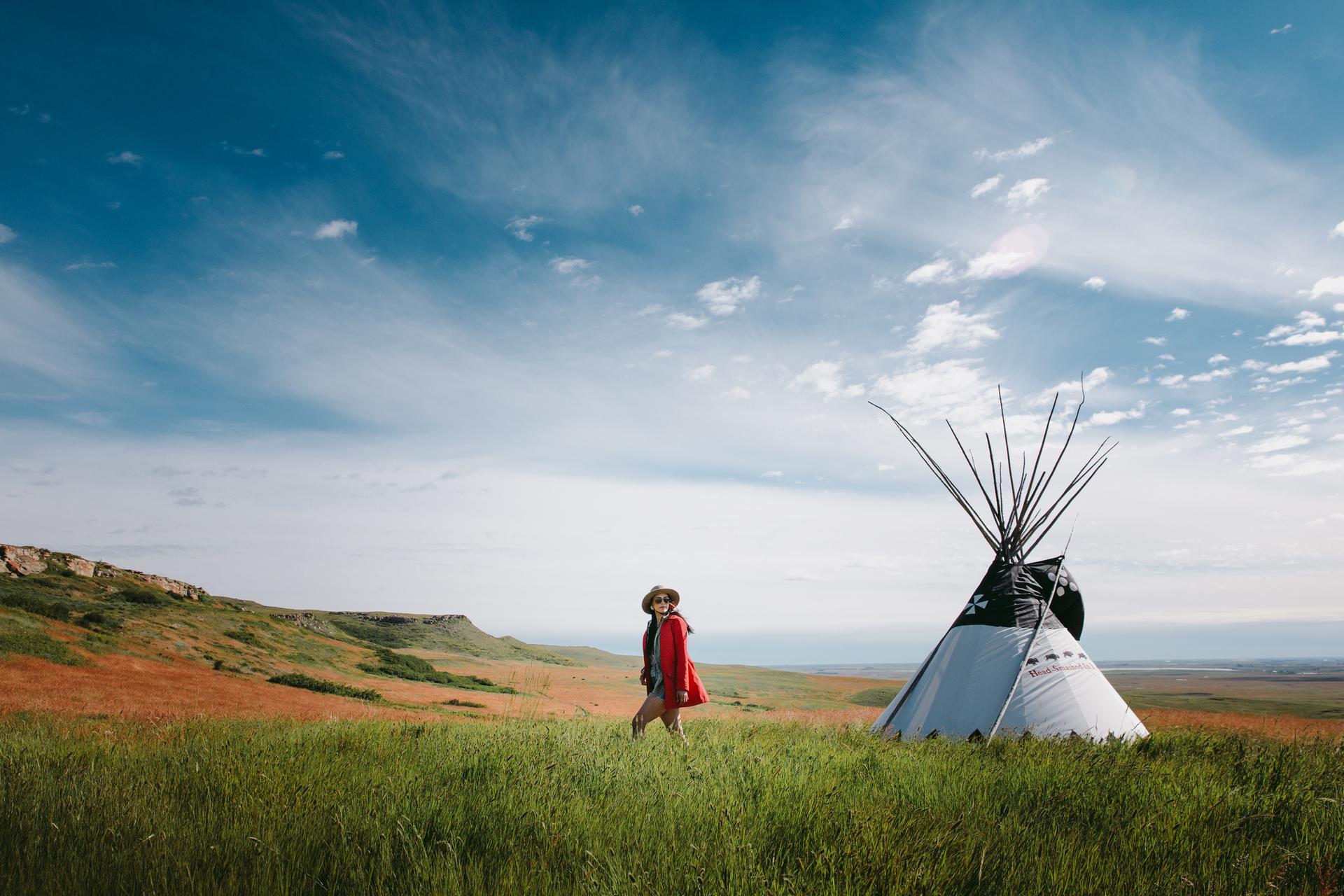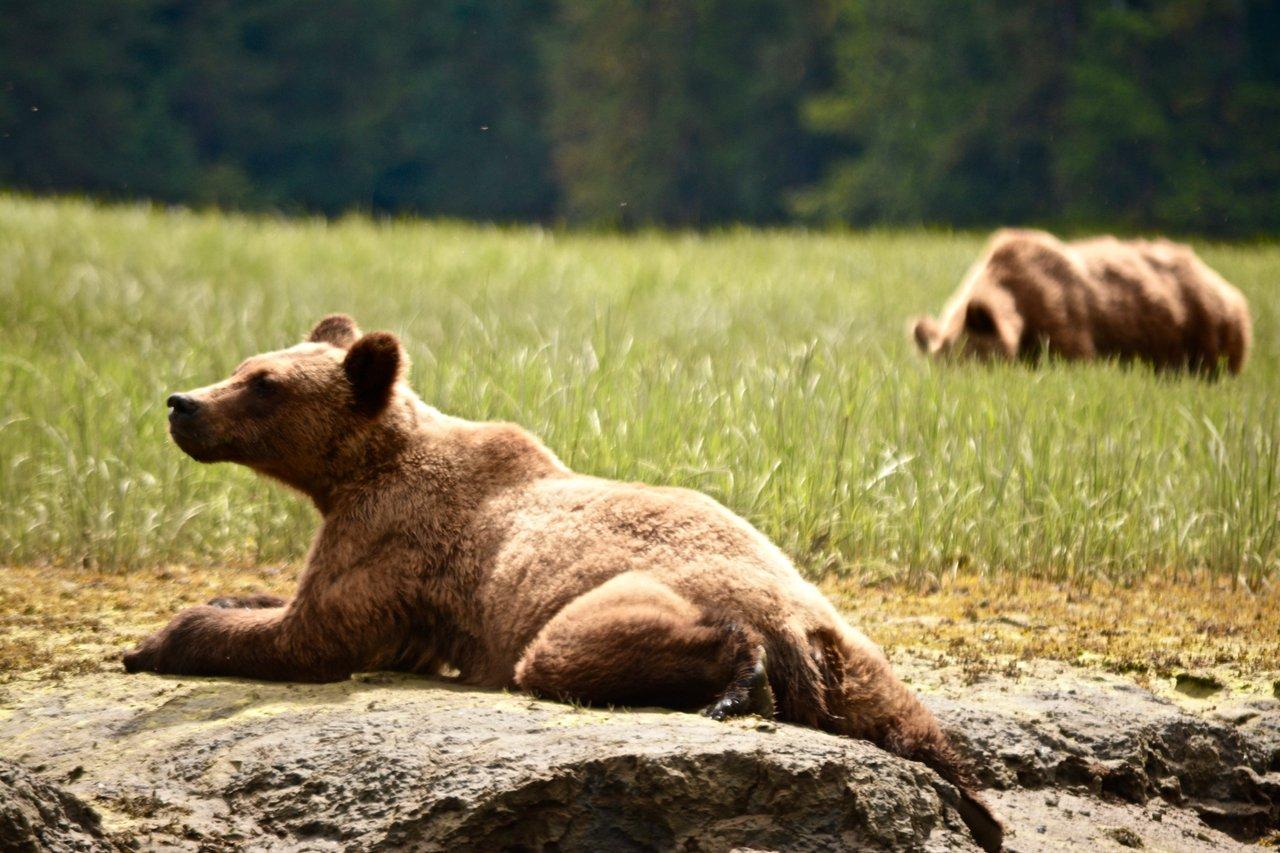12 ways to get closer to Indigenous cultures in Canada

If you’re after an authentic Canadian experience, start at the beginning. The rich Indigenous history in the country is preserved in attractions, events and adventures, and found in every province, from coast to coast to coast.
Here are 12 immersive Indigenous tourism experiences that will bring you closer to the culture and history of the First Peoples.
Manito Ahbee Festival

From the moment the drummers strike up a pounding rhythm, and the women in elaborate shawls spread their butterfly capes, you'll know Winnipeg's Manito Ahbee Festival is a special event. At a traditional Indigenous gathering place, watch as pow wow performers in feathered headdresses share the spotlight with Indigenous hip hop musicians. Feel your whole body move as Cree, Ojibwa and Dakota Sioux dancers spin and sing. And when the "intertribal dance" is called out, that's your cue to join in.
Great Spirit Circle Trail
The Great Spirit Circle Trail shows visitors the lives of the Anishinaabe people of Manitoulin Island in Ontario, the largest freshwater lake island in the world. From waterfalls to breathtaking views, the natural beauty of the island is only surpassed by the culture and tradition that it houses. Seven First Nations reserves can be found on Manitoulin, and the rich Indigenous history is extremely important to all of its residents. The Great Spirit Circle Trail puts you in the hands of a local guide, who will walk you through the history of the island. Hear their stories, share in their food, and even take part in a traditional ceremony.
Kejimkujik National Park and National Historic Site

Kejimkujik National Park in Nova Scotia is a great place to hike and camp, but it's also an opportunity to discover relics of the Mi'kmaq People. Stone carvings known as petroglyphs can be found throughout the park, and contain images that portray hunting, fishing and other snapshots of traditional Mi'kmaq life. If you're not interested in taking a tour, you can hire a canoe and paddle the same waterways used by local Indigenous peoples for generations. Just beware; the park takes its name from Kejimkujik Lake, which apparently means "tired muscles" in Mi'kmaq, referencing just how hard it is to canoe across.
Head-Smashed-In Buffalo Jump Interpretive Centre

For close to 6,000 years, Head-Smashed-In Buffalo Jump was used by countless nomadic tribes to hunt buffalo, making it one of the oldest and best-preserved communal buffalo hunting sites in North America. Visiting the award-winning interpretive centre is a highlight of any trip to the windswept Alberta landscape. Move through the timeline of the legendary buffalo jump to see how the First Nations learned to adapt the landscape to assist in the hunt. Listen to First Nations guides recount life on the plains and demonstrate how the tribes worked together to use every part of the animal. During the summer months, watch and join in as First Nations dancers and drummers perform, or take a hike to the drive lanes to see how the bison were outwitted.
The Huron Traditional Site
Only 15 minutes from Qu?bec City is the Huron Traditional Site. Located in Wendake, on the Huron-Wendat Reservation, this authentic recreation of a Huron village allows you to connect with the Indigenous history in the area. Take a guided tour, participate in unique games, join in a craft workshop or go on a shaman's quest. End your visit with a traditional meal in the NEK8ARRE restaurant.
'Ksan Historical Village and Museum

In the Hazelton community of Northern British Columbia lies the 'Ksan Historical Village and Museum, a re-created Gitxsan village. Seven longhouses, the first of which was built in 1959, replicate a district that stood on the same riverside site for hundreds, or possibly thousands, of years. Look up at totem poles and visit the smoke house and food cache.
Spirit Bear Lodge

Head into the traditional territory of the ancient Kitasoo/Xai'xais People to seek out the mysterious Kermode (Spirit) bear. The culture and heritage of this People has always been linked to the land and the animals, so who better to guide you on a journey in the Great Bear Rainforest in search of this near-mythic, cream-white bear. Hear about the Spirit Bear's mythology from local First Nations, and visit significant Indigenous sites, including a traditional Big House.
Great Northern Arts Festival
During 56 summer days, the Northwest Territories experience 24 hours of daylight. Rather than worry about how it might affect their sleep, locals jumped at the opportunity to celebrate this unique setting. For more than a quarter of a century, the Great Northern Arts Festival has showcased the works of 120 Northern painters, sculptors, musicians and First Nations artists from across the country, all under the midnight sun. Watch a Gwich'in woman create handmade Indigenous dolls, see a polar bear emerge from a soapstone in the hands of a native carver and dance to Inuit hip-hop.
West Baffin Eskimo Co-Operative Limited
Carvings, etchings and stonecut prints are the bread and butter of the West Baffin Eskimo Co-Operative Limited, a collection of Inuit artists based in Cape Dorset. The co-operative has existed for more than 50 years, and has since become arguably the Inuit art capital of the world. On the shores of the Hudson Strait, these artists ply their trade to the delight of the many art lovers that make the trip to the island year-after-year.
Wanuskewin Heritage Park

For over 6,000 years, Wanuskewin Heritage Park was a meeting place for Northern Plains Indians. Long before the pyramids, the Pantheon or the Great Wall of China, Saskatchewan's First Peoples gathered here to hunt buffalo, worship and celebrate. Now, the park is a place to learn about that culture and its history. Explore educational trails that wind through the valley. Visit archeological digs full of tipi rings, stones cairns, pottery fragments, animal bones and more. Stay overnight in a tipi and listen to traditional stories around a campfire as you enjoy tea and fresh bannock bread.
Tombstone Territorial Park

Tombstone Territorial Park might sound intimidating, but this Yukon destination is rich in natural wonders and First Nations culture. Located only 285 kilometres from the Arctic Circle, Tombstone is home to the Tr'ond?k Hw?ch, a First Nation whose history in the area can be traced back thousands of years. Everything from hunting blinds to stone tools and, yes, cemeteries, can be found at over 70 protected First Nations ecological and archeological sites within the park.
National Indigenous Peoples Day

National Indigenous Peoples Day is Canada-wide event held annually on June 21, the summer solstice. This day is meant to "recognize and celebrate the unique heritage, diverse cultures, and outstanding contributions of First Nations, Inuit and M?tis peoples." Throughout the country, National Indigenous Peoples Day is marked by activities and celebrations, featuring everything from community feasts to traditional games. Connect with the local Indigenous community and discover how you can participate.
To discover more experiences like these, visit the Destination Indigenous website.